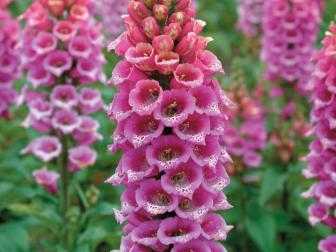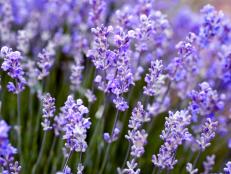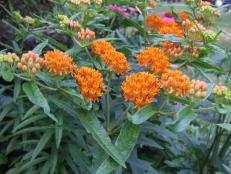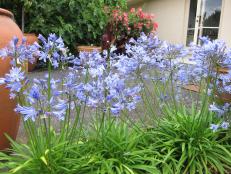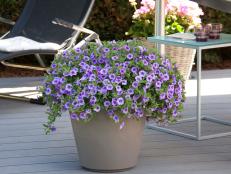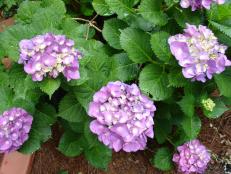How to Care for Butterfly Bush
The colorful flowering butterfly bush is easy to care for and a favorite of gardeners and butterflies alike.

Shutterstock/Dirk M. de Boer
Butterfly bushes, Buddleia davidii, are fast-growing deciduous shrubs that will tempt butterflies and hummingbirds to visit your garden.

By midsummer, butterfly bushes, Buddleia davidii, are in full bloom, producing long, graceful wands of flowers that swallowtails, monarchs and many other butterflies — as well as hummingbirds — can't resist.
Botanical Name: Buddleia davidii
Common Names: Butterfly bush, summer lilac
Bloom Time: Summer
Light Needs: Full sun for best flowering
Hardiness Zones: 5-10
Height & Width: 6' to 12' tall and similar spread, depending on variety. Dwarf varieties will be smaller.
Growth Rate: Fast
1. Where to Plant Butterfly Bush
12 Butterfly Bush Varieties 12 Photos
Butterfly bushes are lovely, fast-growing shrubs that bloom for months and just as the name implies, attract butterflies, bees and birds to your garden.
These fast-growing deciduous shrubs are suitable for planting in perennial borders, cottage gardens, island beds or wherever their loose, somewhat messy growth habit won't detract from a particular garden design you're trying to achieve. The plants tend to sprawl as they grow up to 12 feet tall, although you can opt for dwarf butterfly bush varieties with a neater, more compact growth habit if you're going for a groomed look.
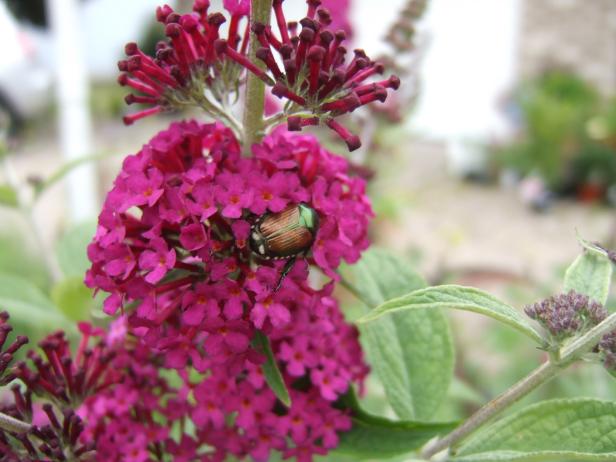
Julie Martens Forney
The flowers, which start opening in summer and continue into fall, come in red, pink, violet, yellow, purple, white and lavender and are held in dense panicles (clusters of flowers) that often have a fruity or honeyed scent. Look closely and you'll find that many of the flowers also have pretty orange "throats."
2. How to Plant Butterfly Bush
Butterfly bushes, sometimes called summer lilacs, are recommended for USDA hardiness Zones 5 to 10 and need full sun and fertile, well-drained soil.
Dig a hole about twice the diameter of the root ball, and set your plant in the garden no deeper than it was growing in its nursery pot.
For maximum impact, plant in masses. Space them 5 to 10 feet apart, or as directed for the variety you're using.
3. How to Use in Your Landscape
Butterfly bushes, as their name suggests, are valued for how they attract butterflies to the garden. In addition to butterflies, their 5- to 12-inch long panicles attract bees, lady beetles and even hummingbirds.
As perennials, they give a butterfly garden year-round interest and their long-lasting flowers are favored for their pleasant fragrance.
Butterfly bush is suitable for planting in perennial borders, cottage gardens, island beds or wherever their loose, somewhat messy growth habit won’t detract from a particular garden design you’re trying to achieve. The plants tend to sprawl as they grow.
4. Butterfly Bush Care
Give butterfly bush about an inch of water a week while they're actively growing, if rain isn't sufficient, but don't worry if you occasionally forget to irrigate. In the first year after planting, these bushes need regular water to develop strong roots. After they're established these plants are relatively drought-tolerant. Fertilizing isn't usually necessary, as it encourages foliage at the expense of flowers.
When to Cut Back Butterfly Bush
You can prune your bushes anytime, and you will probably need to prune a few times each summer to keep them under control. Keep faded flowers deadheaded to encourage more blooms.
Mulch the plants generously to protect them during the winter. Many gardeners prune their butterfly bushes all the way to the ground in late winter. This dormant-season pruning allows extra root and evergy reserves to quickly heal the wounds and supports vigorous spring growth. When the bushes break dormancy in the spring, give them some compost and fresh mulch. If you didn't prune during the winter, it's okay to prune just before a flush of new growth appears.

Proven Winners
"Miss Violet' butterfly bush.
Pests and Disease
Buddleia are seldom bothered by pests or disease, although mullein moths, caterpillars and spider mites can attack them, and the plants are occasionally plagued by fungal infections. If you see insects, try knocking them off with a strong blast of water from the hose, or spray the bushes with insecticidal soap. But try to avoid using pesticides, as they also kill visiting butterflies, bees and other beneficial garden creatures.
To control fungus problems, which can flourish on wet leaves, water bushes early in the day, and use a soaker hose or drip irrigation when possible. Remove diseased plant parts and discard them — but not in your compost pile, where diseases can spread.
5. Popular Butterfly Bush Varieties
- 'White Profusion' – These tall plants produce large spikes of snowy-white flowers.
- 'Black Knight' – Grows to 6 feet with a 4' to 6' spread. The flowers are dark purple.
- 'Pink Delight' – Pink flowers stand out against this plant's silvery-green foliage. It matures at 4' to 6' in both height and width.
Compact Varieties Under 6 Feet Tall
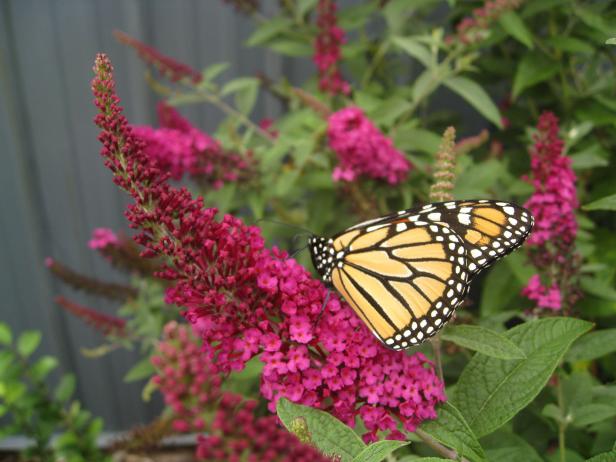
'Miss Molly' features ruby red-pink flowers.
- 'Lilac Chip' – A dwarf with fragrant lavender-pink flowers. This variety is seedless, so the plant doesn't need deadheading.
- 'Miss Molly' – This buttefly bush variety grows 4' to 5' tall and just as wide with ruby red-pink flowers.
- 'Peacock' – A compact-sized plant that bears medium-sized pink flowers. Grows only about one-third the size of other varieties.
- 'Summer Beauty' – This compact variety grows 5 feet tall and just as wide, with deep pink flowers and grayish-green foliage.
Flowers for Your Butterfly Garden 26 Photos
These vibrant flowers and plants provide nectar for butterflies and create a bold border for your yard.
22 Plants to Attract Hummingbirds 22 Photos
Want to appeal to hummingbirds? Consider these flowers they love to visit.
Note: Buddleia, an Asian native, can crowd out native species in North America. Some states now ban butterfly bushes on public grounds or prohibit commercial cultivation and sales of the plants. If you're in doubt about growing butterfly bushes in your area, check with your county extension service office or see the USDA list of invasive weeds.

.-Battle-on-the-Beach-courtesy-of-HGTV.-.jpg.rend.hgtvcom.196.196.suffix/1714761529029.jpeg)






